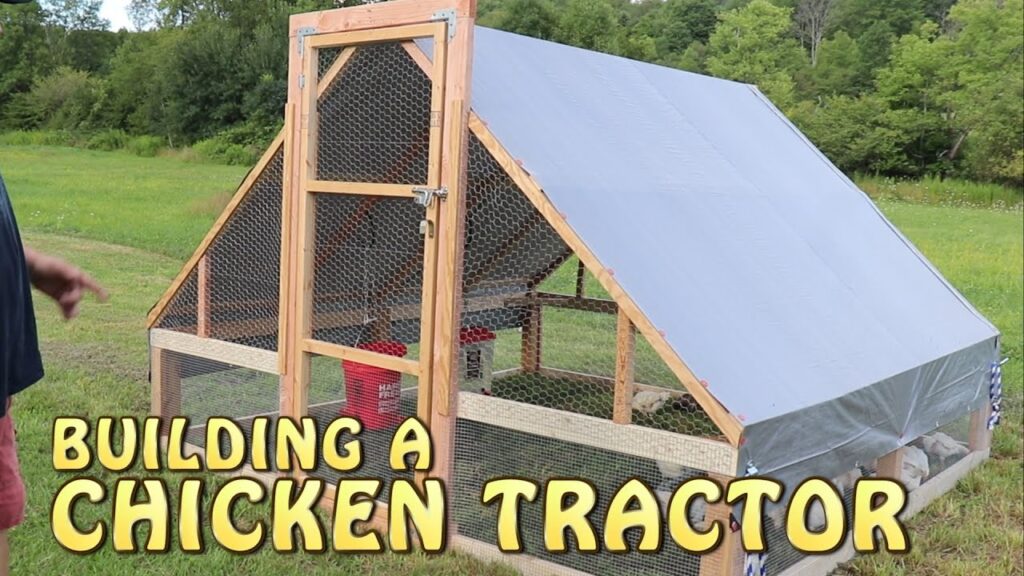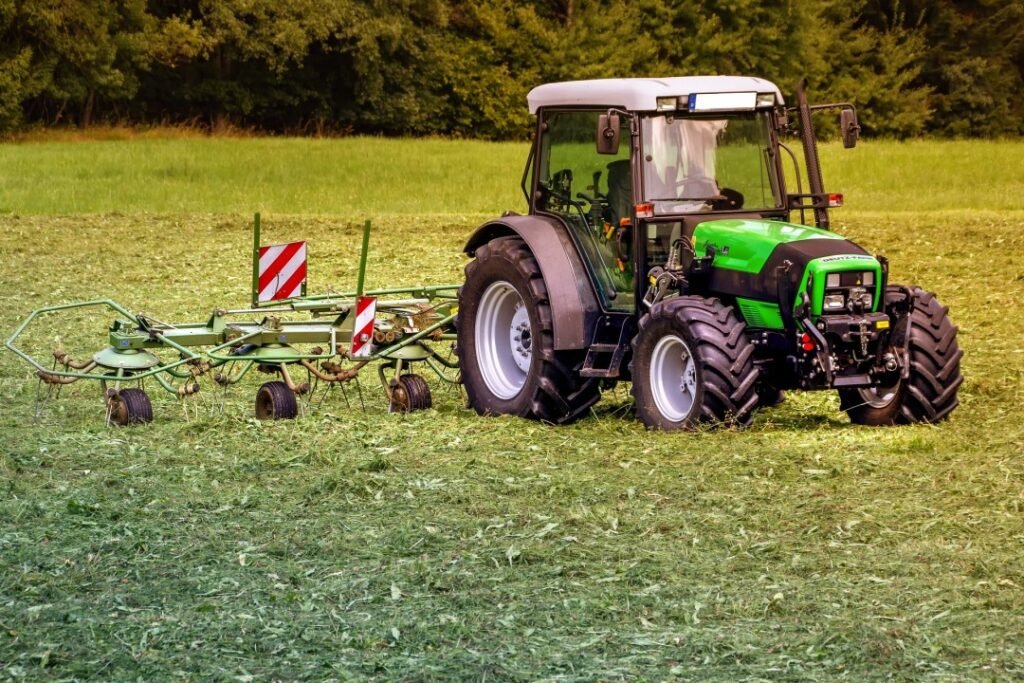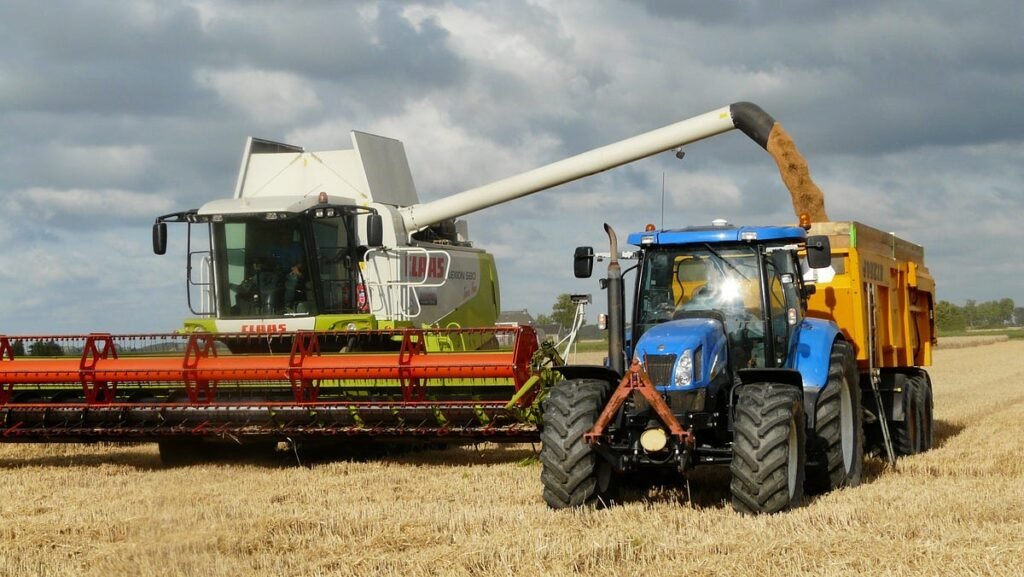Raising chickens can be both rewarding and practical, but it comes with its challenges—especially when it comes to housing. Traditional coops are great for security, but they don’t allow birds to roam freely, while free-ranging exposes them to predators and the risk of overgrazing your land.
I learned this the hard way when my first flock nearly wiped out my backyard garden, and I spent weeks trying to restore my lawn. That’s when I discovered the chicken tractor, a mobile coop that provides the best of both worlds. But what exactly makes a chicken tractor so valuable, and why are so many backyard poultry keepers swearing by them? Let’s look into the details.
What Is the Point of a Chicken Tractor?
A chicken tractor is a portable coop designed to give chickens fresh ground to forage while protecting them from predators. Unlike fixed coops, which require frequent cleaning and can lead to compacted, unhealthy soil, a chicken tractor allows birds to move from one patch of land to another, promoting a healthier environment for both the chickens and the soil beneath them.
But it’s not just about mobility. Chicken tractors are also an excellent way to manage pastures, naturally fertilize soil, and cut down on feed costs. By letting your birds peck at insects, weeds, and grass, you’re giving them a more natural diet while reducing the amount of commercial feed you need to buy.
Benefits of Mobility and Foraging
One of the biggest advantages of a chicken tractor is mobility. Moving the coop daily or every few days prevents chickens from overgrazing one area while providing them with a fresh supply of bugs and greens. This rotational grazing system mimics natural foraging behaviors and results in healthier, happier birds.
Additionally, the constant movement prevents waste buildup, reducing odors and the risk of disease. Chickens are notorious for scratching and digging, which helps aerate the soil and break down organic matter. Over time, this natural process enhances soil health by improving its structure and nutrient content.
Another often-overlooked benefit is the impact on egg quality. Studies show that chickens with access to diverse forage produce eggs richer in omega-3 fatty acids, vitamin E, and beta-carotene compared to birds confined to traditional coops.
Environmental and Cost-Saving Advantages
From an environmental perspective, chicken tractors play a crucial role in sustainable farming. By eliminating the need for synthetic fertilizers, they contribute to a more organic approach to soil health. Chicken manure is packed with nitrogen, phosphorus, and potassium—key nutrients that improve soil fertility without chemical inputs. This not only boosts plant growth but also enhances water retention and reduces soil erosion.
Using a chicken tractor can also save money on feed costs. Chickens naturally supplement their diet by foraging for insects, worms, and plant material, which means you’ll rely less on store-bought feed. Over time, this can lead to significant savings, especially for larger flocks. For example, some backyard farmers report reducing their feed costs by 15–20% simply by rotating their chicken tractors regularly.
Another cost advantage is reduced bedding expenses. Since chicken tractors move frequently, there’s less need for constant bedding replacement, cutting down on material costs and labor.
Choosing the Right Chicken Tractor Design
Not all chicken tractors are created equal, and the best design for you depends on your specific needs. Here are a few popular options:
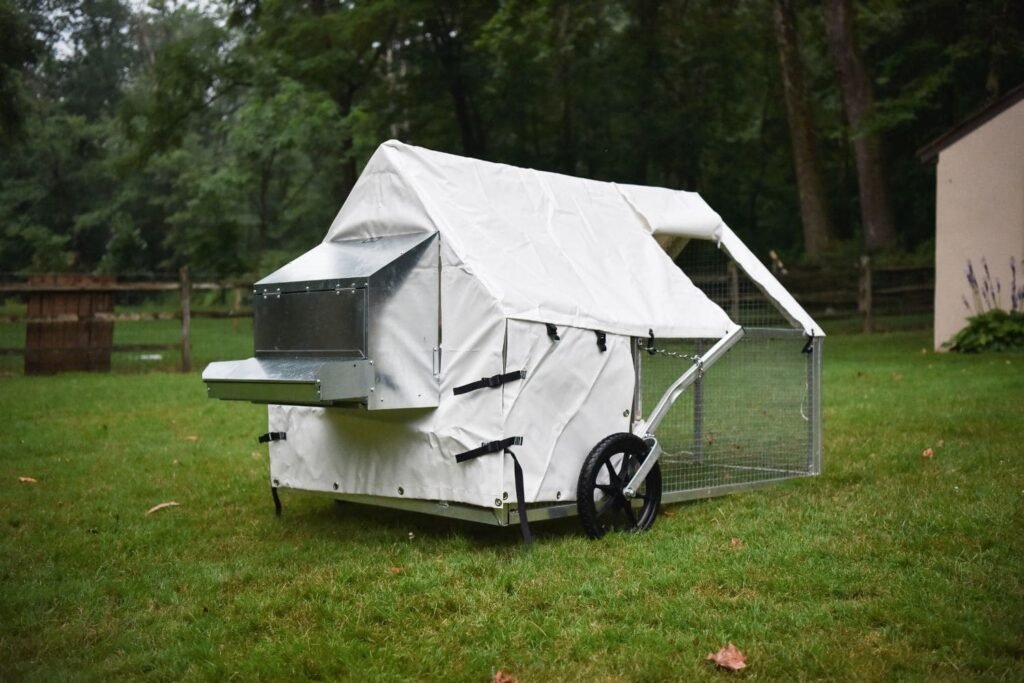
- A-frame tractors – Lightweight and easy to move, ideal for small flocks and mild climates.
- Hoop-style tractors – Offer more space and are great for larger setups; they perform well in areas with moderate temperature fluctuations and rainfall.
- Wheeled tractors – Designed for ease of mobility, especially for those with rough terrain or larger properties.
Each design has its pros and cons, and factors like flock size, climate, and available space should guide your decision.
Chicken tractors are an excellent solution for those looking to raise chickens in a way that benefits both the birds and the environment. They provide a safe, mobile, and sustainable alternative to traditional coops, promoting healthier chickens, richer soil, and lower feed costs.
If you’re considering getting into backyard poultry keeping, a chicken tractor might be the game-changer you need. If you’re already using one, how has it worked for you? Have you faced any challenges or found innovative solutions?
Now that we’ve explored the benefits and design options, let’s dive into the essential materials and step-by-step process to build your own chicken tractor.
Planning Your Chicken Tractor Design
Building a chicken tractor isn’t just about putting together a portable coop—it’s about designing a system that meets your flock’s needs while making your life easier. A well-planned tractor ensures your chickens stay safe, healthy, and productive while improving your soil and reducing maintenance. Before you start building, here’s what you need to consider.
How Big Should Your Chicken Tractor Be?
The size of your chicken tractor depends on how many birds you plan to keep. Chickens need adequate space to forage, scratch, and roost comfortably. As a general rule:
- Bantam breeds require at least 2–3 square feet per bird.
- Standard-sized chickens need 4 square feet per bird.
- Larger breeds like Brahmas may need 5–6 square feet per bird.
If your tractor is too small, your flock may become stressed, leading to pecking issues and lower egg production. On the other hand, an oversized tractor can be difficult to move and may require extra reinforcement.
How Many Chickens Can a Chicken Tractor Hold?
A typical backyard chicken tractor comfortably houses 4–10 chickens, but the exact number depends on the space per bird and the overall design. If you plan to move the tractor frequently, you might get away with a more compact design, but for long-term usability, bigger is often better—as long as you can still move it easily.
Choosing the Right Design: A-Frame vs. Rectangular
The structure of your chicken tractor affects everything from portability to predator resistance. Here are two common designs:
A-Frame Chicken Tractor
- Pros: Lightweight, easy to move, requires fewer materials.
- Cons: Limited interior space, may not offer as much protection from extreme weather.
- Best For: Small flocks, warmer climates, and urban backyard setups.
Rectangular (Hoop or Box-Style) Chicken Tractor
- Pros: More space for birds, better roosting and nesting options, can accommodate larger flocks.
- Cons: Heavier and harder to move, may require wheels for mobility.
- Best For: Larger flocks, colder climates, and more permanent pasture rotation systems.
If you’re raising chickens in an area with high predator activity, a sturdy rectangular tractor with reinforced hardware cloth might be your best bet. Reinforced hardware cloth means using ½-inch galvanized mesh, securely fastened to the frame with heavy-duty staples or screws with washers. To prevent predators from digging under, consider burying the mesh apron at least 6 inches into the ground.
For mobility, rectangular tractors benefit from large pneumatic wheels for rough terrain or solid rubber wheels for flat surfaces. If portability is your top concern, an A-frame design with lightweight materials like PVC or aluminum could work better.
Chicken Tractor with Coop: Integrated vs. Separate Coops
Some chicken tractors include a built-in coop, while others rely on a separate stationary coop. Which one is right for you?
- Integrated Coop: The nesting boxes and roosting area are part of the tractor itself. Great for full-time tractor living but can be heavier to move. Design considerations include adding a drop-down door for easy egg collection and elevated roosting bars for comfort.
- Separate Coop: Birds free-range in the tractor during the day but return to a stationary coop at night. Ideal for those who want mobility during the day but extra security at night.
If you want an all-in-one solution, an integrated coop tractor makes daily care simple. However, if you prefer a lightweight setup, a separate coop might be more practical.
The right chicken tractor design depends on your space, climate, and flock size. A well-planned setup ensures your chickens stay healthy and productive while making your management tasks easier. Whether you choose an A-frame, rectangular, integrated, or separate coop system, careful planning will save you time and effort in the long run. Think about your specific needs—do you need more mobility, predator resistance, or egg collection convenience? Designing with these in mind will lead to a setup that works best for both you and your flock.
Up next: Materials and Tools Needed!
Essential Materials and Tools for Building a Chicken Tractor
Before you start constructing your chicken tractor, gathering the right materials and tools is crucial. A well-built tractor is lightweight, durable, predator-proof, and easy to move. Using the best materials ensures longevity while minimizing maintenance. Here’s everything you’ll need to get started.
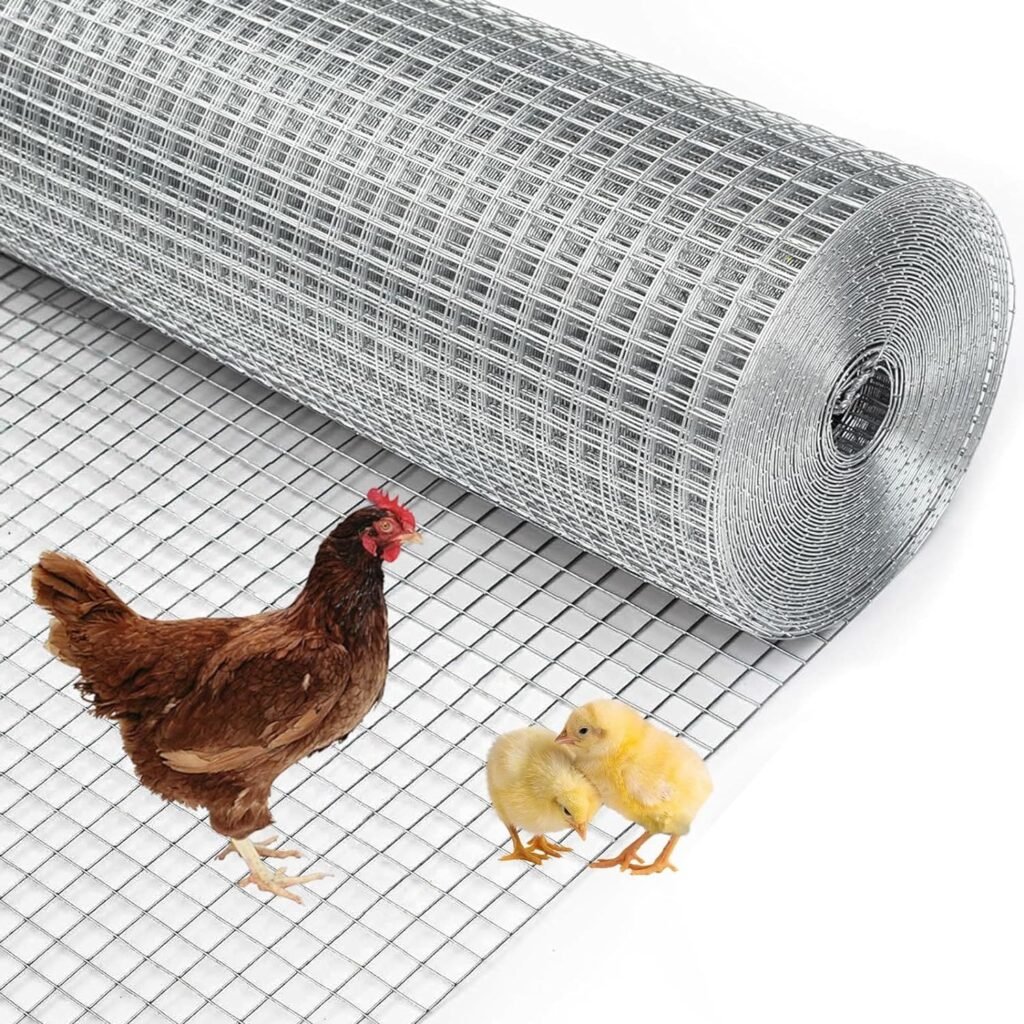
Choosing the Right Building Materials
Your chicken tractor should be sturdy enough to withstand weather conditions while remaining portable. The materials you select will affect durability, weight, and ease of movement. Here are the best options:
- Frame Materials:
- 2×4 Pressure-Treated Lumber or Cedar – Sturdy and weather-resistant, but heavier.
- PVC Pipes (Schedule 40 for durability) – Lightweight and easy to assemble, though less durable.
- Metal Tubing (Galvanized Steel or Aluminum) – Extremely durable and predator-proof but can add weight.
- Flooring and Sidewalls:
- 16-Gauge Hardware Cloth (½-inch galvanized wire mesh) – Provides security from predators and good ventilation.
- Chicken Wire (18- to 20-gauge) – More affordable but less secure against predators.
- Wooden Panels or Polycarbonate Sheets – Offer wind protection but may reduce airflow.
- Roofing Options:
- Corrugated Metal Sheets – Long-lasting and weatherproof.
- Polycarbonate Panels – Lightweight and allow natural light.
- Heavy-Duty UV-Resistant Tarp – Flexible and easy to remove for ventilation.
Picking the Right Wheels for Mobility
One of the defining features of a chicken tractor is its mobility. Choosing the right wheels ensures smooth movement over different terrains:
- Pneumatic Wheels (Air-Filled Tires, 10-inch or larger) – Best for uneven, grassy, or muddy ground.
- Solid Rubber Wheels (6- to 8-inch diameter) – Durable and great for flat, compact surfaces.
- Swivel Caster Wheels (Locking, 4-inch minimum) – Ideal for small, lightweight tractors on hard ground.
For best results, position the wheels at the rear and use a lever, handles, or a dolly system to lift the front when moving the tractor.
Must-Have Tools for Construction
Having the right tools on hand will make assembly quicker and more efficient. Here’s what you’ll need:
- Power Drill (Cordless or Electric, with drill bits and driver bits) – Essential for securing screws and fasteners.
- Saw (Circular Saw for wood, Hacksaw for metal, or PVC Cutter for pipes) – Needed for precise cuts.
- Measuring Tape (25-foot retractable) – Ensures accurate measurements.
- Staple Gun (Heavy-Duty, with ½-inch staples) – To attach mesh securely to the frame.
- Wrench & Screwdriver Set – For assembling wheels, hinges, and fasteners.
- Tin Snips or Heavy-Duty Wire Cutters – Required for cutting hardware cloth or chicken wire.
- Level & Carpenter’s Square – Ensures straight, even construction.
Alternative tools: If a power drill isn’t available, a manual hand drill can be used but will take longer. Similarly, a handsaw can replace a circular saw for wood cuts.
Safety Considerations
- Wear gloves when handling sharp wire mesh or cutting materials.
- Use safety goggles when drilling, cutting, or stapling.
- Secure your work area and ensure children and pets stay at a safe distance.
Cost Considerations
For budget-conscious builders, consider these options:
- Repurposing lumber from pallets or old furniture, instead of buying new wood, will save on costs.
- Use reclaimed metal roofing instead of purchasing new sheets.
- Opt for second-hand wheels from old carts, wheelbarrows, or lawnmowers.
Additional Features to Consider
To improve functionality, consider adding these features to your chicken tractor:
- Handles, Rope Pulls, or a Wheelbarrow-Style Design – Make moving the tractor easier.
- Hinged Access Doors – Allows convenient egg collection and feeding.
- Automatic Feeder & Waterer – Reduces daily maintenance.
- Shade Cover or Rainproof Roof – Provides protection from sun and rain.
Building a durable, mobile, and predator-proof chicken tractor starts with selecting the right materials and tools. A lightweight but sturdy frame, secure flooring, and well-chosen wheels will make your setup both functional and long-lasting. If possible, incorporate visual aids, sketches, or step-by-step images to guide your building process. In the next section, we’ll walk through step-by-step building plans to help you construct a high-quality chicken tractor for your flock!
Step-by-Step Guide to Constructing a Chicken Tractor
Now that you’ve gathered the essential materials and tools, it’s time to start building. A well-designed chicken tractor should be sturdy, easy to move, and provide a safe, comfortable environment for your flock. Follow this step-by-step guide to construct a functional and efficient chicken tractor that meets all your needs.
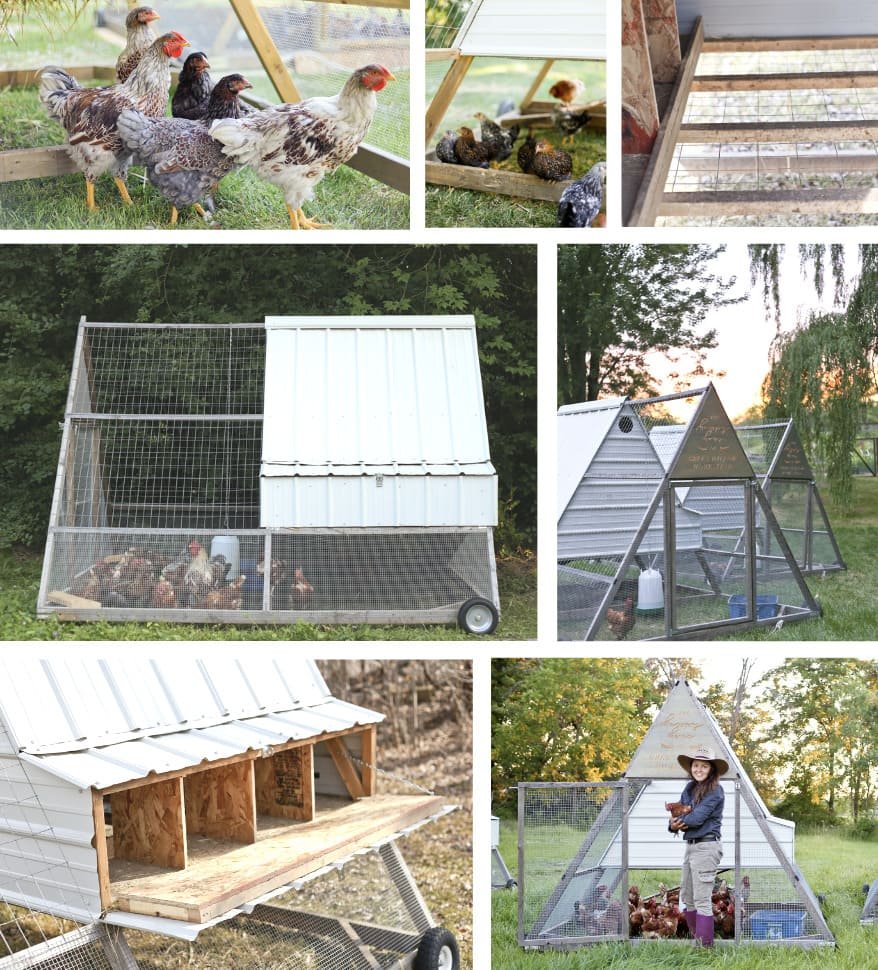
Step 1: Designing Your Chicken Tractor
Before you begin cutting and assembling, take some time to plan your build. Consider the following factors:
- Size: Determine how many chickens you plan to house. A general rule is 2–3 square feet per bird inside the tractor and at least 8–10 square feet in the run area.
- Weight & Mobility: Ensure it’s light enough to move easily but heavy enough to withstand strong winds.
- Weather Protection: Design for proper ventilation, shade, and rain protection.
- Predator-Proofing: Use strong, durable materials and secure latches to keep out raccoons, foxes, and other threats.
Sketch a rough blueprint with dimensions and materials to visualize your design before starting construction.
Step 2: Building the Base Frame
A solid foundation is key to durability and mobility. Follow these steps to construct the base:
- Measure and cut the 2×4 pressure-treated lumber to match your planned dimensions.
- Assemble the base frame using a power drill and screws, ensuring it is square and level.
- Attach heavy-duty wheels to one side for easy maneuverability. If using a lever-lift system, leave space for handles or a dolly.
- Reinforce corners with metal brackets and additional screws to prevent shifting.
Safety Tip: Wear safety glasses when drilling and handling wood to prevent injury.
Tip: If you’re using wood, seal the edges with weatherproof paint or stain to extend durability.
Step 3: Constructing the Walls and Roof
The walls and roof provide structural integrity and protection for your flock. Here’s how to build them:
- Frame the sidewalls using 2×4 lumber and attach them to the base with screws and brackets.
- Secure ½-inch hardware cloth or welded wire to the walls for ventilation and predator-proofing. Use heavy-duty staples or zip ties and a staple gun.
- Construct a lightweight roof frame using wooden panels, polycarbonate sheets, or corrugated metal.
- Attach the roof securely using hinges or screws, ensuring one section can open for easy access.
Alternative: If you prefer an A-frame style, build two triangular side panels and attach them at the peak for a sloped roof design.
Safety Tip: Always wear gloves when handling wire mesh to avoid cuts.
Step 4: Adding Nesting Boxes and Roosting Bars
Providing a comfortable resting and laying area is essential for healthy, happy chickens.
- Nesting Boxes: Install 1 box per 3–4 hens. Construct boxes from ¾-inch plywood, with dimensions of 12x12x12 inches, and position them in a quiet, shaded section.
- Roosting Bars: Chickens prefer to sleep off the ground. Use 2-inch wooden dowels or 2×2 lumber, positioning them at least 12–18 inches above the floor.
- Easy Access: Hinged lids or external collection doors make egg gathering more convenient.
Safety Tip: Sand down all wooden edges to prevent splinters.
Step 5: Installing Doors and Ventilation
Your chicken tractor needs secure yet accessible entry points.
- Main Access Door: A small, predator-proof door for chickens to enter and exit, made from ¾-inch plywood.
- Human Access Door: Large enough for cleaning, feeding, and maintenance, framed with 2×4 lumber.
- Ventilation Windows: Covered with hardware cloth to ensure proper airflow while keeping out pests.
Tip: Use spring-loaded latches or padlocks to prevent predators from opening doors.
Safety Tip: Double-check all hinges and locks for stability before use.
Step 6: Final Touches and Testing
Before introducing your chickens, do a final check to ensure everything is secure and functional.
- Test mobility by rolling the tractor across different surfaces.
- Check all latches and hinges for security.
- Inspect for sharp edges that could injure your birds.
- Add food and water stations in easily accessible areas.
Building a chicken tractor takes time and effort, but the result is a practical, cost-effective solution for free-ranging your flock safely. With proper design and sturdy construction, your chickens will have a secure, mobile home that meets their needs while simplifying your daily care routine. In the next, we’ll break down the costs and budgeting considerations to help you build an affordable yet durable chicken tractor.
Cost and Budgeting: Building a Chicken Tractor on Any Budget
A chicken tractor is a great investment for backyard farmers and homesteaders, but how much will it cost? Whether you’re building one from scratch or purchasing a pre-made model, budgeting wisely can save you money while ensuring your chickens have a sturdy, functional home. Let’s break down the costs and explore budget-friendly options.
How Much Does It Cost to Build a Chicken Tractor?
The cost of a DIY chicken tractor depends on materials, size, and design complexity. Additionally, material costs can vary significantly by region, so it’s worth checking local suppliers for the best deals. Here’s a general breakdown:
- Basic DIY Model: $100–$300 (repurposed wood, chicken wire, basic wheels)
- Mid-Range DIY Model: $300–$600 (pressure-treated lumber, hardware cloth, durable roofing)
- High-End DIY Model: $600–$1,200+ (metal framing, automatic doors, predator-proof reinforcements)
Pre-made chicken tractors vary in price:
- Small Pre-Made Models: $200–$600 (lightweight, for a few chickens)
- Large Pre-Made Models: $800–$2,500 (sturdy, weatherproof, often includes features like nesting boxes and wheels)
Budget-Friendly DIY Tips
Want to save money while still building a quality chicken tractor? Try these cost-cutting strategies:
- Repurpose Materials: Use scrap wood, pallets, or leftover metal roofing.
- Check Local Listings: Habitat for Humanity ReStores and online marketplaces often have discounted materials.
- Buy in Bulk: If you need multiple items, buying screws, hinges, and wire in bulk can save money.
- Simplify the Design: Avoid unnecessary complexity—stick to a basic yet functional structure.
- Consider Tool Costs: If you don’t already own the necessary tools, factor in rental or purchase costs.
- Use Online Resources: Websites like Craigslist, Facebook Marketplace, and Freecycle can be great sources for discounted or free building materials.
DIY vs. Pre-Made Chicken Tractors: Which is Better?
If you’re deciding between building your own or buying one, consider these factors:
| Factor | DIY Chicken Tractor | Pre-Made Chicken Tractor |
| Cost | Potentially lower, if using repurposed materials | Higher, but includes professional craftsmanship |
| Customization | Fully customizable | Limited to manufacturer designs |
| Time & Effort | Requires tools, skills, and time | Ready to use upon delivery |
| Durability | Can be as strong as materials allow | Often made with high-quality, weatherproof materials |
While DIY offers cost savings, customization, and a rewarding project, it also requires an investment of time, which can be a deciding factor. Time is money, and if convenience is a priority, a pre-made model might be a worthwhile investment.
A chicken tractor can be as affordable or as elaborate as you want. By carefully planning your budget and choosing cost-effective materials, you can create a mobile chicken home that meets your needs without overspending. Now that we’ve covered budgeting, let’s look into the best practices for using and maintaining your chicken tractor to keep your flock healthy and your investment lasting for years.
Using and Maintaining a Chicken Tractor
A chicken tractor isn’t just a coop on wheels—it’s a dynamic system that enhances your flock’s health while benefiting your land. But to get the most out of it, proper use and maintenance are essential. Let’s explore how to keep your chicken tractor running smoothly year-round.
How Often Do You Move a Chicken Tractor?
The frequency of moving your chicken tractor depends on factors like flock size, pasture health, and weather conditions. Generally, you should relocate it every 1–3 days to ensure fresh foraging and prevent soil damage. Here’s why:
- Avoid Overgrazing: Chickens will strip an area of greenery if left too long, leading to bare soil.
- Healthier Chickens: Frequent moves reduce parasite buildup and exposure to droppings.
- Fertilization Benefits: Proper rotation distributes manure evenly, enriching the soil naturally.
For larger flocks, moving it daily prevents overcrowding and keeps the ground from becoming compacted. If you notice strong ammonia smells or muddy patches, it’s a sign your tractor needs to be relocated more frequently.
Do Chickens Sleep in a Chicken Tractor?
Yes, but they need a comfortable and secure roosting area. Most chicken tractors include built-in roosts, ensuring chickens can perch off the ground at night. To keep your flock safe and stress-free:
- Provide Roosting Bars: Position them at least 12–18 inches off the ground.
- Ensure Predator Protection: Reinforce the tractor with hardware cloth instead of chicken wire to keep out raccoons and foxes.
- Ventilation Matters: Proper airflow reduces humidity and prevents respiratory issues.
- Winter Considerations: In colder months, add windbreaks or insulation (such as straw bales or insulated tarps) to keep chickens warm without trapping moisture.
Seasonal Adjustments and Weather Considerations
Weather changes impact how you manage a chicken tractor. Here’s how to adapt:
- Summer: Provide shade, cool water, and airflow to prevent heat stress.
- Winter: Add straw bedding, wind protection, and portable tarps to shield from harsh conditions.
- Rainy Seasons: Use elevated perches and well-draining locations to prevent mud buildup.
- Predator Awareness: Some animals, like coyotes and hawks, are more active in different seasons, so reinforce security accordingly.
(Note: Seasonal challenges and predator risks may vary by region, so adjust accordingly based on local conditions.)
Cleaning and Upkeep for Long-Term Use
Regular maintenance keeps your chicken tractor functional and safe. Follow these steps:
| Maintenance Task | Frequency |
| Check for damage, secure latches, refresh water/food | Daily |
| Remove excess manure, inspect wheels, clean roosts | Weekly |
| Deep-clean the tractor, check for rust or wood rot, replace bedding | Monthly |
| Assess structure, repaint/seal wooden parts, repair wear and tear | Yearly |
A well-maintained chicken tractor ensures healthier chickens, better land management, and long-term savings. By moving it regularly, adjusting for weather, and staying on top of maintenance, you’ll maximize its benefits for both your flock and your homestead. Ready to optimize your chicken care even further? Now, let’s explore egg laying and productivity, covering how to maximize egg yield, troubleshoot common laying issues, and ensure a steady supply of fresh eggs year-round.
(For affordable materials and DIY resources, consider checking sites like Craigslist, Facebook Marketplace, local farm supply stores, and agricultural co-ops.)
Egg Laying and Productivity
Will Chickens Lay Eggs in a Chicken Tractor?
Absolutely! Chickens will lay eggs in a chicken tractor, but for consistent egg production, they need the right conditions. Stress, discomfort, or lack of nesting space can reduce egg output. To encourage regular laying:
- Provide Secure Nesting Boxes: Each box should be 12×12 inches and positioned in a quiet, shaded section of the tractor.
- Ensure Comfortable Bedding: Use straw, pine shavings, or shredded paper for insulation and comfort.
- Limit Disturbances: Frequent movement, loud noises, or predator threats can stress hens and disrupt laying.
- Consistent Lighting: Hens need 14–16 hours of daylight to maintain peak egg production. In winter, a solar-powered light inside the tractor can help.
- Reduce Predator Stress: Place the tractor in a well-lit area at night and use visual deterrents like reflective tape or motion-activated lights to keep predators away.
How Many Nesting Boxes Per Chicken?
A good rule of thumb is one nesting box for every 3–4 hens. Overcrowding in nesting areas can lead to broken eggs, stress, and hens laying eggs outside the designated space. Keep nesting boxes clean, private, and dark to encourage use.
How Many Eggs Does a Chicken Lay?
Egg production depends on factors like breed, diet, and age. Here’s what to expect:
| Breed Type | Average Egg Production (per year) |
| High Producers (300+ eggs) | Leghorns, Australorps, Rhode Island Reds |
| Moderate Producers (200–280 eggs) | Sussex, Orpingtons, Plymouth Rocks |
| Lower Producers (100–200 eggs) | Silkies, Cochins, ornamental breeds |
Peak laying occurs in the first 1–2 years, after which production gradually declines. Proper nutrition—including 16–18% protein layer feed, oyster shell for calcium, and fresh greens—keeps egg production steady.
Molting and Egg Production
Hens go through an annual molting phase where they shed and regrow feathers. During this period, egg production may temporarily stop as their bodies redirect energy toward feather regrowth. Support them by providing high-protein feed (20%+), sunflower seeds, and mealworms to speed up recovery.
Maximizing Egg Production in a Chicken Tractor
To ensure hens lay consistently, consider these additional strategies:
- Balanced Diet: Supplement feed with crushed eggshells for calcium and omega-3-rich seeds like flax.
- Routine Health Checks: Parasites and illnesses can impact egg production, so monitor for signs of distress or illness.
- Climate Control: Extreme heat or cold can affect laying cycles—use shade cloths in summer and insulation in winter.
- Nesting Box Placement: Elevate nesting boxes slightly and keep them in a low-traffic area of the tractor to reduce stress.
- Hydration Matters: Fresh, clean water at all times is crucial for egg-laying consistency.
Lifespan and Care
How Long Do Chickens Live?
The lifespan of a chicken depends on various factors, including breed, environment, and overall care. On average, backyard chickens live 5–10 years, but some well-cared-for hens can reach 12 years or more. However, in a chicken tractor system, lifespan can be influenced by additional factors such as mobility, exposure to predators, and access to fresh forage.
Key factors that affect a chicken’s lifespan include:
- Breed Genetics: Heritage breeds like Orpingtons and Rhode Island Reds tend to live longer than high-production hybrids like ISA Browns.
- Predator Protection: A well-secured tractor with reinforced mesh and predator deterrents significantly increases longevity.
- Nutrition and Health Care: Proper diet, clean water, and parasite control prevent common diseases and health issues.
- Environmental Conditions: Protection from extreme temperatures, adequate ventilation, and dry bedding reduce stress and illness risk.
Common Chicken Diseases and Prevention
Keeping chickens healthy means preventing common diseases before they start. Here are a few of the most frequent illnesses and how to avoid them:
- Marek’s Disease: A viral infection that causes paralysis. Vaccinate chicks early and keep the coop clean.
- Coccidiosis: A parasite affecting the digestive system. Maintain dry bedding and provide medicated feed if necessary.
- Respiratory Infections: Caused by bacteria, fungi, or viruses. Ensure proper ventilation and avoid overcrowding.
- Egg Binding: A condition where a hen has trouble laying an egg. Provide a calcium-rich diet and ensure hens stay hydrated.
Regular health checks and maintaining a clean environment go a long way in preventing these issues.
Feed and Water Requirements in a Chicken Tractor
A balanced diet is crucial for the health and productivity of chickens in a tractor system. Since they have access to fresh grass and insects, their feed should complement their foraging diet.
Essential Feeding Guidelines:
- Layer Feed: Hens need a 16–18% protein layer feed to maintain egg production and overall health.
- Calcium Supplementation: Provide oyster shell or crushed eggshells to ensure strong eggshell formation.
- Grit for Digestion: Since chickens lack teeth, offering insoluble grit helps them break down food efficiently.
- Fresh Greens & Scraps: Vegetables, fruits, and kitchen scraps (excluding toxic foods like onions, chocolate, and avocado) provide variety and nutrients.
Hydration Needs:
- Chickens drink one pint (0.5 liters) of water per day, with increased intake in hot weather.
- Automatic waterers or nipple drinkers prevent contamination and ensure a constant clean water supply.
- Adding electrolytes and apple cider vinegar (1 tbsp per gallon) can support hydration and gut health during heatwaves or stress.
Protecting Chickens from Predators
Since chicken tractors move frequently, they offer natural foraging benefits but also expose birds to predators. Taking proactive steps to secure the tractor ensures safety.
Common Predator Threats:
- Land Predators: Foxes, raccoons, coyotes, and stray dogs can dig under or break into weakly built enclosures.
- Aerial Predators: Hawks and owls can swoop down if the tractor lacks overhead protection.
- Rodents & Snakes: Smaller predators can steal eggs and chicks or bring diseases into the flock.
Predator-Proofing Strategies:
- Hardware Cloth Instead of Chicken Wire: Chicken wire can be torn by predators; use 1/4-inch hardware cloth for fencing.
- Buried Apron: Extend wire mesh 12 inches outward at the base to prevent digging animals.
- Locking Mechanisms: Use predator-proof latches instead of simple clips that raccoons can manipulate.
- Motion-Activated Lights & Sounds: Install solar-powered predator deterrents to keep night-time threats away.
- Secure Roosting Area: Ensure the tractor has an enclosed section where chickens can safely sleep at night.
Emergency Preparedness for Chicken Owners
Emergencies can happen, and being prepared can save your flock. Here’s how to handle common situations:
- Predator Attack: If a predator breaches the tractor, secure the area, check for injuries, and reinforce weak points.
- Extreme Weather: Provide insulation for cold weather and shade or cooling fans during heat waves.
- Sick Chicken: Isolate the bird immediately and consult a vet if symptoms persist.
Quick Health Check Checklist
Daily Checks:
- Fresh food and clean water available
- Observe for signs of illness (lethargy, abnormal droppings)
- Check for predator damage on the tractor
Weekly Checks:
- Inspect chickens for parasites like mites or lice
- Clean and refresh nesting areas
- Check for egg production consistency
Monthly Checks:
- Deep clean the tractor and disinfect surfaces
- Review feed and supplement levels
- Inspect structural integrity of the tractor and fencing
Staying on top of these checks ensures your flock remains healthy and productive!
By optimizing care, nutrition, and predator protection, chickens in a tractor system can thrive and live long, productive lives. Want more tips on chicken care? Drop your questions below!
Additional Resources
Looking for more details on building and maintaining a chicken tractor? Here are some valuable resources to help you get started and optimize your setup:
How Long Does It Take to Build a Chicken Tractor?
The time required to build a chicken tractor depends on the design, materials, and your experience level. A simple DIY model can take a weekend, while more complex builds may require a week or more. Check out detailed guides and step-by-step plans from sources like Backyard Chickens and The Happy Chicken Coop to estimate your timeline accurately.
Best Chicken Tractor Plans and Kits
If you’re unsure where to start, pre-made plans and kits can simplify the process. Explore a variety of designs, from lightweight PVC frames to sturdy wooden structures, ensuring they meet your specific needs for flock size, mobility, and predator protection. Websites such as Murray McMurray Hatchery and Tractor Supply Co. offer excellent plans and kits for beginners and advanced builders alike.
Where to Buy Chicken Tractor Supplies
Finding the right materials is crucial for durability and efficiency. Hardware stores, farm supply shops, and online retailers offer essential components like wheels, mesh wire, and weather-resistant lumber. Some suppliers, including Premier 1 Supplies and My Pet Chicken, even provide ready-to-assemble kits.
Community Forums and Expert Advice
Engaging with experienced chicken keepers can save you time and effort. Join online forums such as Backyard Chickens Forum, Permies.com, and relevant Facebook groups to exchange tips, troubleshoot issues, and discover innovative modifications for your chicken tractor. Additionally, check with local agricultural extension offices or university agricultural programs for workshops and expert guidance.
Recommended Books
For a deeper dive into chicken tractor management, consider reading:
- Chicken Tractor: The Permaculture Guide to Happy Hens and Healthy Soil by Andy Lee and Patricia Foreman
- Storey’s Guide to Raising Chickens by Gail Damerow
These books offer expert insights and practical guidance on raising chickens in a mobile system.
By leveraging these resources, you can build a functional and efficient chicken tractor that enhances your flock’s well-being while simplifying your daily farm routine.
FAQs
How often should I move my chicken tractor?
It depends on factors like flock size, grass growth, and weather conditions. Generally, moving it every one to three days prevents overgrazing and ensures fresh foraging.
What’s the best flooring for a chicken tractor?
A wire mesh bottom allows droppings to fall through while protecting against predators. Some owners prefer an open bottom for direct ground access but must monitor for digging predators.
Can a chicken tractor be used year-round?
Yes, but winter conditions require modifications like insulated panels, windbreaks, and heated waterers to keep chickens comfortable.
How do I protect my flock from predators in a chicken tractor?
Secure locks, strong mesh wire, and an enclosed roosting area deter predators. Moving the tractor regularly also helps reduce risk.
What breeds are best for a chicken tractor setup?
Hardy, active foragers like Rhode Island Reds, Buff Orpingtons, and Australorps thrive in mobile setups. Choose breeds suited to your climate and purpose (eggs, meat, or dual-purpose).
How big should a chicken tractor be?
A good rule of thumb is at least 4 square feet per chicken inside the tractor and 8-10 square feet per bird in an attached run. More space improves flock health and reduces stress.
How often should I clean a chicken tractor?
Cleaning frequency depends on flock size and weather. Removing waste every few days and deep cleaning every couple of weeks helps maintain hygiene and prevent disease.
How do I introduce new chicks to a chicken tractor?
Introducing chicks to a chicken tractor requires careful planning. Chicks should be at least 6-8 weeks old, fully feathered, and acclimated to outdoor temperatures. Start by placing them in a secure, enclosed area within the tractor for a few days before allowing them full access. Ensure they have a heat source if temperatures are low and monitor their interactions with older birds to prevent bullying.
What plants are safe to grow around or inside a chicken tractor?
Some plants thrive alongside chickens and even benefit their diet and soil health. Safe options include clover, alfalfa, mint, comfrey, and marigolds. Avoid toxic plants like nightshade, azaleas, or foxglove. Planting herbs like lavender and oregano can also help with pest control and promote flock health.
Conclusion
A well-designed chicken tractor offers a practical, sustainable, and cost-effective way to raise chickens while benefiting both your flock and your land. By selecting the right design, ensuring proper predator protection, and moving it regularly, you can create a healthy, efficient system that enhances egg production and soil health. Plus, using a mobile coop saves time and effort by reducing manual cleaning and improving foraging efficiency. Whether you’re a backyard enthusiast or a small-scale farmer, using the right resources and strategies will make your chicken-keeping journey more enjoyable and successful.
What do you think? Have you used a chicken tractor before, or are you planning to build one? Share your experiences, tips, or questions in the comments below! Let’s keep the conversation going. Happy farming!
